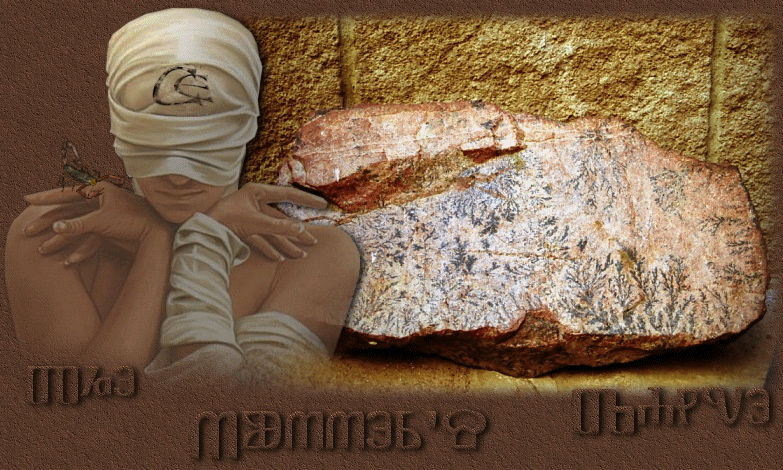
Chorus:
We've been rambling all the night
And some time of this day
Now returning back again
We bring a garland gay
Who will go down to those shady groves
And summon the shadows there
And tie a ribbon on those sheltering arms
In the springtime of the year
The songs of birds seem to fill the wood
That when the fiddler plays
All their voices can be heard
Long past their woodland days
Chorus:
We've been rambling all the night
And some time of this day
Now returning back again
We bring a garland gay
And so they linked their hands and danced
Round in circles and in rows
And so the journey of the night descends
When all the shades are gone
"A garland gay we bring you here
And at your door we stand
It is a sprout well budded out
The work of Our Lord's hand"
Chorus:
We've been rambling all the night
And some time of this day
Now returning back again
We bring a garland gay
Chorus:
We've been rambling all the night
And some time of this day
Now returning back again
The Mummer's Dance
(1997)
© 2007 photo by Carmen Ezgeta: Samostan Sv. Katarine; Egipat; studeni 2006.
St. Catherine's Monastery, Egypt; November 2006
© Copyright: graphic arts; animation & design by Carmen Ezgeta

Loreena McKennitt
(1957)
music and lyrics by Loreena McKennitt
In the Judeo-Christian region: Mt. Sinai in the Sinai peninsula, the peak where Moses received the Ten Commandments.
Saint Catherine's Monastery is a monastery on the Sinai peninsula, at the foot of Mount Sinai, in Egypt.
It was built by order of the Emperor Justinian between 527 and 565 enclosing the Chapel of the Burning Bush ordered built by Helena,
the mother of Constantine I, at the site where Moses is supposed to have seen the burning bush.
The bush is purportedly alive and on the grounds.
Though it is commonly known as Saint Catherine's, the actual name of the monastery is the Monastery of the Transfiguration.
The monastery library preserves the second largest collection of early codices and manuscripts in the world,
outnumbered only by the Vatican Library.
The Mummer's Dance — ![]()
Staro hrvatsko pismo glagoljica - The Croatian Glagolitic Alphabet ( has a long and interesting history of more than a thousand years.)
The Croatian Glagolitic Alphabet
The Croats using the Glagolitic alphabet were the only nation in Europe who was given a special permission by Pope Innocent IV (in 1248)
to use their own language and this script in liturgy. More precisely, this permission had formally been given to the bishop Philip of Senj.
However, special care accorded by the Vatican to the Glagolitic liturgy in subsequent centuries (even by publishing several Glagolitic missals in Rome),
shows that this privilege applied to all Croatian lands using the Glagolitic liturgy, mostly along the coast.
As is well known, the Latin had been the privileged language in religious ceremonies in the Catholic Church
until the 2nd Vatican Synod held in 1962-1965, when it was decided to allow vernacular national languages to be used in the Catholic liturgy instead of Latin.
It is interesting that even today the Glagolitic liturgy is used in some Croatian churches.
In 1252 the Pope Innocent IV allowed Benedictine Glagolitic monks in Omisalj on the largest Croatian island of Krk
to use the Croatian Church-Slavonic liturgy and the Glagolitic Script instead of Latin.
The Rules of St. Benedict, written in Croatian Glagolitic Script in 13th or14th century,
are very probably the earliest known translation of Benedictine rules from Latin into a living language (Croatian Church-Slavonic).
Altogether 60 pages are preserved out of 70, that Benedictines had to know by heart.
We also know that Croatian Glagolitic Benedictines existed in the city of Krk, and on the island of Pasman near Zadar.
Even more peculiar was the existence of Benedictines on the island of Brac near Split, in Povlja, who used the Croatian Church-Slavonic liturgy,
and - the Croatian Cyrillic Script! It should be noted that members of the Benedictine monastic order were strict followers of the Latin liturgy
and of the Latin language and script everywhere in Europe - except in parts of the Croatian littoral.
According to rev. Ivan Ostojic, outstanding specialist on the history of benedictines in Croatia,
in 13th and 14th centuries Croatia had as many as 70 known benedictine monasteries for monks, and more than 20 for nuns.
Back Next
| PAGE 1 (Poezija - Poetry) | PAGE 2 (Poezija - Poetry) | PAGE 3 (Poezija - Poetry) |
PAGE 4 (Poezija - Poetry) |
| PAGE 5 (Poezija - Poetry) | PAGE 6
(Poezija - Poetry) | PAGE 7 (Poezija - Poetry) |
| Index: A - I
(Poezija - Poetry) | Index: J - Q (Poezija - Poetry) | Index: R - Z
(Poezija - Poetry) |
| Poets & Poems - pjesnici i pjesme [ abecedni popis pjesnika (djelomican popis) ] |
|
Please Sign My GuestBook | View My Old GuestBook |
| Carmen Ezgeta (ponesto o meni - something about me) |
| Foto galerija - Photo Gallery | MIDI kutak - Carmen's MIDI corner |
| Sto je novo...? - What's New...? | Logo | Home | Exit |
www.EZGETA.com — since 1998
Ezgeta.com je osobna visejezicna stranica poezije, umjetnosti, muzike, humora i misli...
Ezgeta.com is a Croatian multilingual personal site with poetry, art, music, humor and nice things...
Images, web content & design © carmen ezgeta
All Rights Reserved

When in the Springtime of the year
When the trees are crowned with leaves
When the ash and oak, and the birch and yew
Are dressed in ribbons fair
When owls call the breathless moon
In the blue veil of the night
The shadows of the trees appear
Amidst the lantern light
